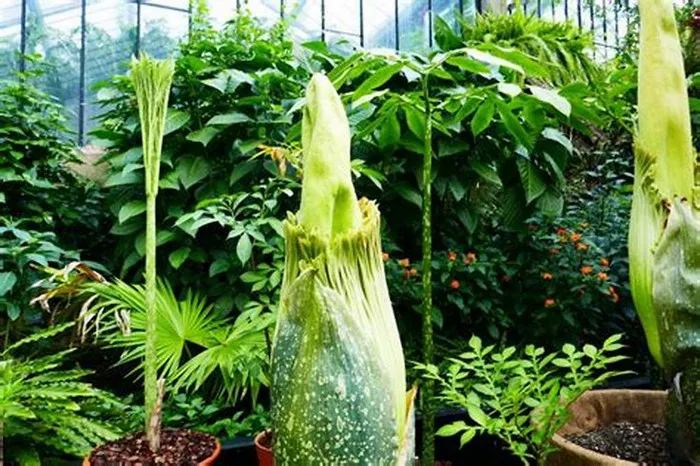Get ready for a pungent surprise at Franklin Park Conservatory and Botanical Gardens.
Sometime in the next four to 13 days, visitors may catch a glimpse—and a whiff—of a Titan arum (Amorphophallus titanum), famously known as the corpse flower. Resembling Audrey II from “Little Shop of Horrors,” this plant emits a foul odor likened to rotting flesh when in bloom.
Corpse flowers bloom infrequently, making sightings of their deep burgundy-red interiors rare. Alexis Lorentzen, horticulture project manager at Franklin Park, explained, “It’s a rare sight because the flower only remains open for one or two days. Timing is crucial as it’s quite unpredictable.”
Native to the rainforests of western Sumatra, Indonesia, the corpse flower is endangered, with fewer than 1,000 remaining in the wild. “Having (four) in our collection is remarkable,” Lorentzen noted. “Various botanical gardens are focused on conservation and extensive research.”
This will mark only the second bloom of the corpse flower received by Franklin Park from Cornell University in 2016, with its last bloom occurring in 2020.
The irregular blooming intervals are due to the plant’s corm—a tuberous underground stem acting as a storage system—which takes years to gather enough energy for blooming through photosynthesis. “One indicator of impending bloom is the shriveling and eventual falling away of its two protective leaf coverings, known as bracts,” Lorentzen added.
Standing just under 5 feet tall with a corm weighing approximately 25 pounds, Franklin Park’s imminent bloom is expected to increase in height over the next few days. In the wild, corpse flowers can reach heights of up to 10 feet.
But why does it smell so bad?
“The primary reason is its attraction to pollinators,” Lorentzen explained. “In Sumatra, the main pollinators are certain flies and beetles. The foul odor is essential to attract them for cross-pollination, vital for the plant’s reproduction.” Additionally, thermogenesis heats the plant’s core to 98 degrees Fahrenheit, intensifying the smell to attract more pollinators.
If the bloom occurs next week, Franklin Park may extend its hours to accommodate more visitors eager to witness this rare spectacle in the Dorothy M. Davis Showhouse.


